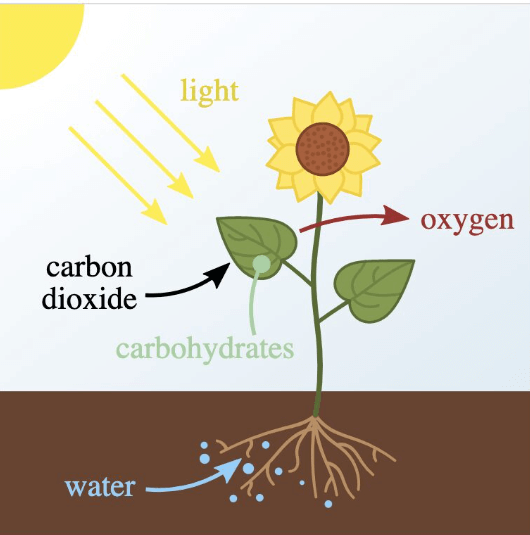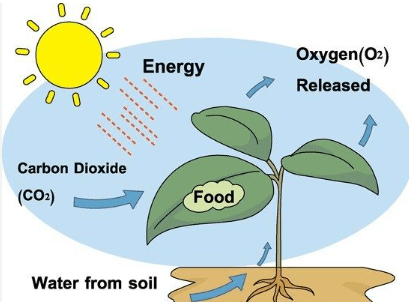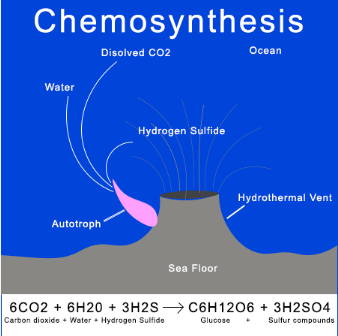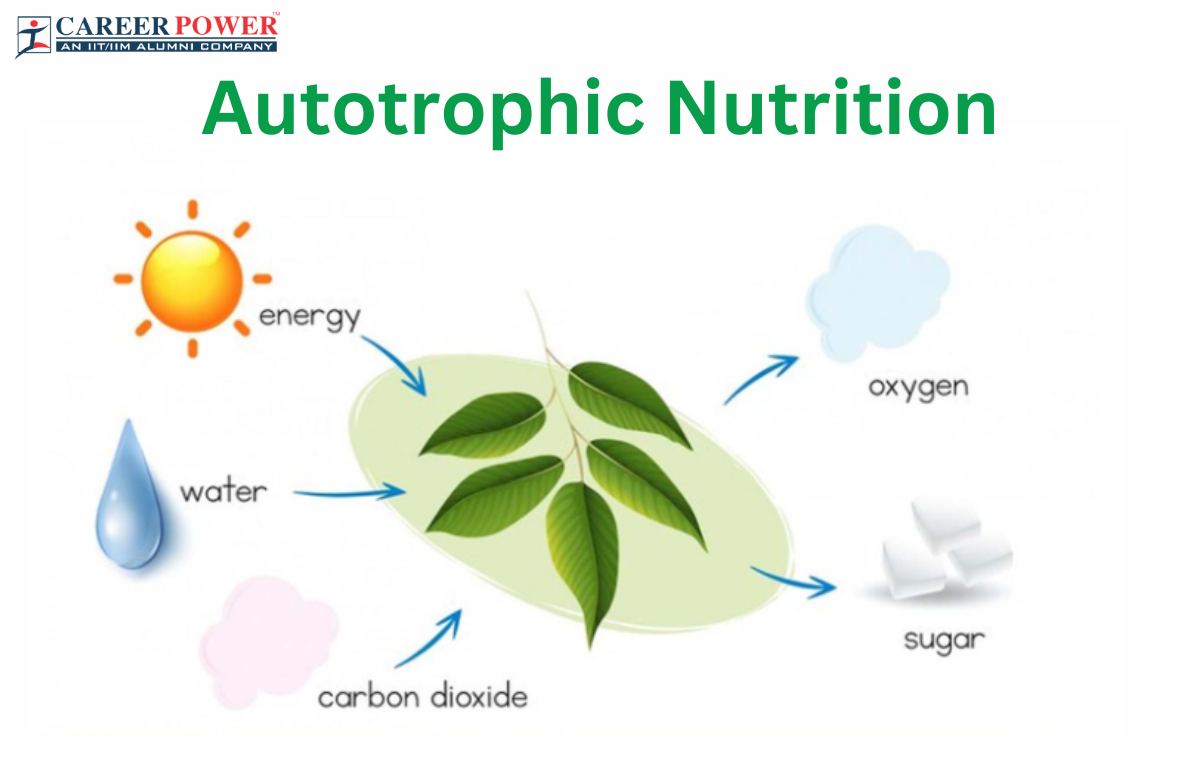As we all know that nutrition is a well-known topic from Chapter: 01 “Life Processes” of the class 10th biology section. Nutrition refers to the process of obtaining and using the food and nutrients necessary for growth, health, and overall well-being. It involves the intake of various nutrients, such as carbohydrates, proteins, fats, vitamins, and minerals, which are essential for maintaining the body’s functions, energy levels, and optimal health.
Proper nutrition plays a crucial role in supporting bodily functions, preventing diseases, and promoting overall wellness. There are mainly two different modes of nutrition: Autotrophic and Heterotrophic nutrition. Here we will be discussing the Autotrophic mode of Nutrition.
What is Autotrophic Nutrition?
Autotrophic nutrition is a biological process in which organisms produce their own organic compounds, such as carbohydrates, using simple inorganic substances like carbon dioxide and water. Or we can say that Autotrophic Nutrition is a mode of nutrition where organisms produce their own food using inorganic substances.

Autotrophic Nutrition is mainly of two different types: Photosynthesis and Chemosynthesis. The process involves photosynthesis in plants, where they use sunlight to convert carbon dioxide and water into glucose and oxygen. While some bacteria also use Chemosynthesis to produce energy from inorganic compounds in environments without sunlight.
Types of Autotrophic Nutrition
Autotrophic nutrition can be classified into two main types: Photosynthesis and Chemosynthesis. These two types of autotrophic nutrition demonstrate the diverse strategies that organisms have developed to generate their own food and energy from the environment.
| Types of Autotrophic Nutrition | |
| Types | Description |
| Photosynthesis | In this process plants convert sunlight, carbon dioxide, and water into glucose and oxygen, powering ecosystems and life. |
| Chemosynthesis | In this process, bacteria in extreme environments use chemicals to produce energy-rich compounds, supporting a unique ecosystem. |
1. Photosynthesis
Photosynthesis is the process by which plants, algae, and some bacteria convert light energy from the sun into chemical energy. It occurs in the chloroplast of the plant cell. During photosynthesis, these organisms use chlorophyll, a pigment in their cells, to capture sunlight. This energy is then used to convert carbon dioxide and water into glucose (a type of sugar) and oxygen. Glucose serves as a source of energy for the organism, while the released oxygen is released into the atmosphere, supporting life on Earth. The process of photosynthesis mainly involves three main parts of a plant, which are the leaves, stomata, and roots.

- Leaves: The leaves contain chlorophyll, which enables photosynthesis where sunlight converts carbon dioxide and water into glucose, releasing oxygen and energy.
- Stomata: These stomata regulate gas exchange during photosynthesis. They allow CO2 to enter the Calvin cycle and release O2 produced during the light reaction.
- Roots: Roots primarily absorb water and nutrients from the soil, supporting plant health. However, roots are not directly involved in the process of photosynthesis.
Equation of Photosynthesis
The photosynthetic equation represents the process by which plants, algae, and some bacteria convert carbon dioxide and water into glucose and oxygen using energy from sunlight. The equation for photosynthesis can be represented as:
6CO2 + 6H2O + Light energy → C6H12O6 + 6O2
In words, carbon dioxide and water, in the presence of light energy, combine to form glucose and oxygen. This process takes place in the chloroplasts of the plant cell and involves several complex biochemical reactions.
Functions of Photosynthesis
As we know that photosynthesis is a vital process in which plants, algae, and some bacteria convert light energy into chemical energy. Some of the key functions of photosynthesis that play a crucial role in sustaining life on Earth have been mentioned below.
- Conversion of Light Energy: Photosynthesis captures the light energy of the sun and converts it into chemical energy.
- Oxygen Production: Oxygen gas is a byproduct of photosynthesis, released into the atmosphere, which supports the respiration of many organisms.
- Glucose Synthesis: Photosynthesis produces glucose (a type of sugar) as an energy-rich molecule that can be used by plants for growth.
- Carbon Dioxide Fixation: Photosynthesis removes carbon dioxide from the atmosphere, helping regulate the Earth’s Carbon Cycle.
- Oxygen Production’s Impact on Atmosphere: The accumulation of oxygen over time due to photosynthesis led to the establishment of an oxygen-rich atmosphere, enabling the evolution of complex life forms.
- Stomatal Regulation: Photosynthesis influences the opening and closing of stomata, tiny pores on leaves, which regulate water loss and gas exchange in plants.
- Biomass Formation: The organic compounds created in photosynthesis contribute to the growth and development of plant tissues, regulating increased biomass.
- Nutrient Cycling: Photosynthesis facilitates the cycling of essential nutrients through ecosystems, as nutrients are transported and stored in plant tissues.
2. Chemosynthesis
Chemosynthesis is a process by which certain organisms, often found in extreme environments like deep-sea hydrothermal vents or acidic hot springs, produce energy by converting inorganic molecules into organic compounds. Unlike photosynthesis, which uses light energy to convert carbon dioxide and water into glucose and oxygen. Chemosynthesis relies on chemical reactions involving substances like hydrogen sulfide or methane. The organisms responsible for chemosynthesis are known as chemosynthetic bacteria, these bacteria play a crucial role in ecosystems where sunlight isn’t available as an energy source.

Equation of Chemosynthesis
As we know that chemosynthesis is a process where certain bacteria and other microorganisms use chemical energy, rather than light energy, to convert carbon dioxide and hydrogen sulfide into organic compounds and elemental sulfur. The equation for chemosynthesis can vary depending on the specific organisms and compounds involved, but a general equation might be:
CO2 + 4H2S + O2 → CH2O + 4S + H2O
In this reaction, carbon dioxide combines with hydrogen sulfide and oxygen to produce organic compounds, sulfur as a byproduct, and water. It’s an important process that supports life in extreme environments where sunlight isn’t available.
Functions of Chemosynthesis
The functions mentioned below collectively highlight the significance of chemosynthesis in various ecological, scientific, and even practical contexts.
- Energy Production: Chemosynthesis allows organisms to generate energy in the absence of sunlight by using chemical reactions involving inorganic compounds.
- Extreme Environments: Chemosynthesis is crucial in extreme environments where sunlight doesn’t reach, such as deep-sea hydrothermal vents, underwater caves, and certain terrestrial habitats.
- Bacterial Role: Chemosynthetic bacteria are the primary organisms involved in this process. They utilize energy from chemical reactions to create organic molecules, serving as the foundation of these ecosystems.
- Carbon Fixation: Chemosynthesis helps fix carbon dioxide from the environment into organic molecules, contributing to the carbon cycle.
- Scientific Study: Understanding chemosynthesis provides insights into the potential for life beyond Earth, as similar processes could occur in extraterrestrial environments where sunlight isn’t available.
- Impact on Earth’s System: Chemosynthesis, by contributing to carbon fixation and energy flow, has an impact on global biogeochemical cycles and Earth’s overall climate regulation.



 50 Vegetables Name for Kids in English a...
50 Vegetables Name for Kids in English a...
 Food Chain: Definition, Types, Examples,...
Food Chain: Definition, Types, Examples,...
 Human Respiratory System: Definition, Di...
Human Respiratory System: Definition, Di...













